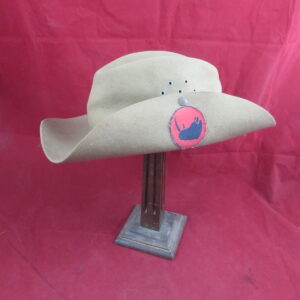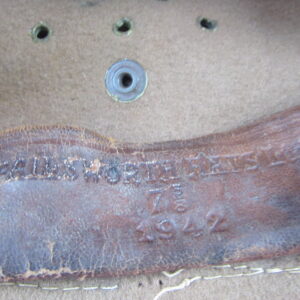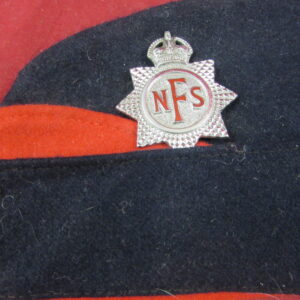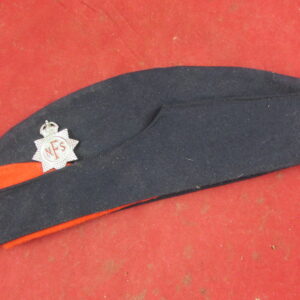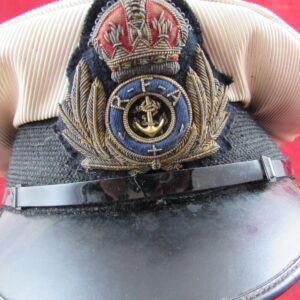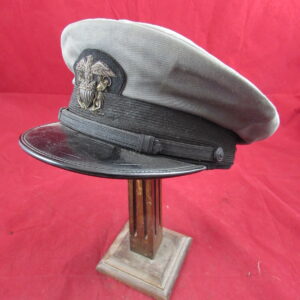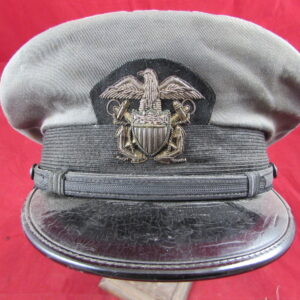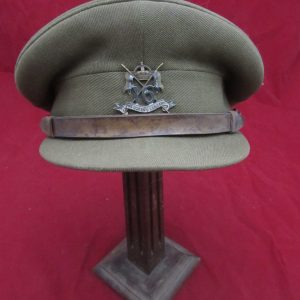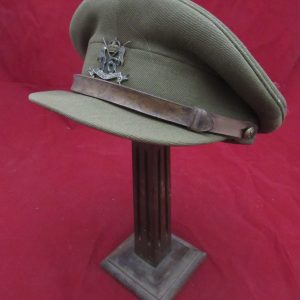WW1 British Artillery Fuze
Views: 1532
£25.00
WW1 British Artillery Fuze, Type No80
- Description
- Shipping and Delivery
Description
WW1 British Artillery Fuze Type No80
This is time and percussion fuze No 80 , usually used with the British shrapnel shells of the famous 18 pounder field guns.
This is a used and dug up piece that has been cleaned up nicely and has a nice patina.
WW1 British Artillery Fuze Type No80
An artillery fuze or fuse is the type of munition fuze used with artillery munitions, typically projectiles fired by guns (field, anti-aircraft, coast and naval), howitzers and mortars. A fuze is a device that initiates an explosive function in a munition, most commonly causing it to detonate or release its contents, when its activation conditions are met. This action typically occurs a preset time after firing (time fuze), or on physical contact with (contact fuze) or detected proximity to the ground, a structure or other target (proximity fuze). Fuze, a variant of fuse, is the official NATO spelling.
Broadly, fuzes function on impact (percussion fuzes) or at a pre-determined time period after firing (time fuzes). However, by the 18th century time fuzes were aimed to function in the air and in the 1940s proximity fuzes were introduced to achieve more precisely positioned airburst. Therefore, the terms ‘percussion’ and ‘airburst’ are generally used here unless ‘time’ fuzes are being explicitly described.
It was not until around the middle of the following century that it was realised that the windage between ball and barrel allowed the flash from the propelling charge to pass around the shell. This led, in 1747, to ‘single-fire’ and eliminated the need to light the fuze before loading the shell. At this time fuzes were made of beech wood, bored out and filled with powder and cut to the required length. Experience taught that there was a minimum safe length. In 1779 the British adopted pre-cut fuze lengths giving 4, 4.5 and 5 seconds.[2]
The first account of a percussion fuze appears in 1650, using a flint to create sparks to ignite the powder. The problem was that the shell had to fall a particular way and with spherical shells this could not be guaranteed. The term ‘blind’ for an unexploded shell resulted. The problem was finding a suitably stable ‘percussion powder’. Progress was not possible until the discovery of mercury fulminate in 1800, leading to priming mixtures for small arms patented by the Rev Alexander Forsyth, and the copper percussion cap in 1818. The concept of percussion fuzes was adopted by Britain in 1842, many designs were jointly examined by the army and navy, but were unsatisfactory, probably because of the safety and arming features. However, in 1846 the design by Quartermaster Freeburn of the Royal Artillery was adopted by the army. It was a wooden fuze some 6 inches long and used shear wire to hold blocks between the fuze magazine and a burning match. The match was ignited by propellant flash and the shear wire broke on impact. A British naval percussion fuze made of metal did not appear until 1861.[3]
At this time, Antiqurio ships to locations within the United Kingdom mainland. Items can be shipped worldwide by prior agreement please contact us. The risk of loss and title for all items ordered on this website pass to you when the items is delivered to the shipping carrier. We are unable to calculate shipping automatically for multiple items when shipping internationally please contact us by email if you wish to purchase more than one item and live outside of the UK; we are working to resolve this
International
Customs and import duties may be applied to International orders when the shipment reaches its destination. This is not imposed by Antiqurio and these charges are the responsibility of the recipient of your order and are likely to vary from country to country. Contact your local customs office for details.
Shipping laws are different in each country. It is your responsibility to check with your Customs office to verify whether the country to which you are shipping permits the shipment of your products. Antiqurio is not responsible for any direct, indirect, punitive, or consequential damages that arise from improper international shipping practices.


